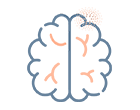Sullivan, R., Yau, W. Y., O’Connor, E., & Houlden, H. (2019). Spinocerebellar ataxia: an update. Journal of neurology, 266(2), 533–544. https://doi.org/10.1007/s00415-018-9076-4
Klockgether, T., Mariotti, C., & Paulson, H. L. (2019). Spinocerebellar ataxia. Nature reviews. Disease primers, 5(1), 24. https://doi.org/10.1038/s41572-019-0074-3
Sun, Y. M., Lu, C., & Wu, Z. Y. (2016). Spinocerebellar ataxia: relationship between phenotype and genotype – a review. Clinical genetics, 90(4), 305–314. https://doi.org/10.1111/cge.12808
Soong, B. W., & Morrison, P. J. (2018). Spinocerebellar ataxias. Handbook of clinical neurology, 155, 143–174. https://doi.org/10.1016/B978-0-444-64189-2.00010-X
Manto, M. (2005). The wide spectrum of spinocerebellar ataxias (SCAs). The Cerebellum, 4(1), 2-6. doi: 10.1080/14734220510007914
Spinocerebellar ataxia. (2019). Nature reviews. Disease primers, 5(1), 25. https://doi.org/10.1038/s41572-019-0081-4
Coarelli, G., Brice, A., & Durr, A. (2018). Recent advances in understanding dominant spinocerebellar ataxias from clinical and genetic points of view. F1000Research, 7, F1000 Faculty Rev-1781. https://doi.org/10.12688/f1000research.15788.1





